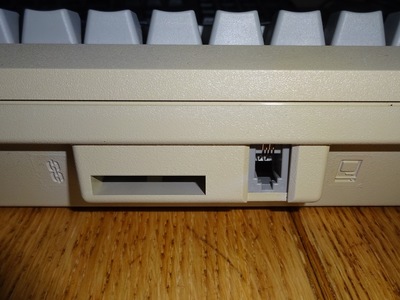Posted 2013/2/15
Why are PC connectors so buggered?
I came across an interesting article on USB connectors today, and it got me thinking. Why, exactly, are most of the cables you use on a PC so hard to orient properly?
- USB-A cables, the subject of that article, are possibly the worst offenders. I realize there are tricks to know the correct orientation, but that’s harder to do when you’re reaching around the back of a tower. Oh, and then you’ll jam it into the Ethernet port anyway.
- PS/2 connectors might be the worst for this. There’s a little arrow, but you can never remember which side of the port the arrow is supposed to go on, so you just kind of rotate the connector and push until it eventually goes in. Or bends all the pins.
- VGA and DVI. VGA is the worst, seems like every time I try to plug in a VGA monitor, I’m guaranteed to have it the wrong way round. DVI is slightly better but not much. Oh, and once you’ve plugged it in, you have to tighten those bastard screws on the thing!
Now, strangely enough, we’ve had better connectors for a long time. RJ11 and RJ45 cables are pretty much impossible to plug in wrong and they provide pretty good retention–good enough to yank my laptop to the floor when I trip over the Ethernet cable! No screws to tighten, you just click it in.

Pictured: a keyboard with an RJ11-style connector
USB-B is much more obviously directional, but we seem to only use it on printers, scanners, and other large peripheral devices. Every time I’ve connected a cable to a printer, it’s been right the first time.

Apple-style magnetic connectors are decent too. Once you get it close to the correct orientation, it snaps in. We probably don’t want dozens of magnets on our computers, though.
Phone adapters are omnidirectional and easy. There’s also something very satisfying about plugging in a 1⁄4” phone plug. I’ve seen them with 4 conductors, which is sufficient to do USB, although you might need to take heed of potential ramifications of running 5V DC over one of the conductors. I’d love it if my mouse and keyboard terminated into 1⁄4” phone adapters.
Update: USB-C will probably be our savior here. The final spec wasn’t ratified until over a year after this article’s writing, but I’m finally starting to see it show up. My wife’s Nexus 5X has a USB-C connector and it’s great, although of course everything else in the house is the old micro-USB so she can only use the charger that came with it.